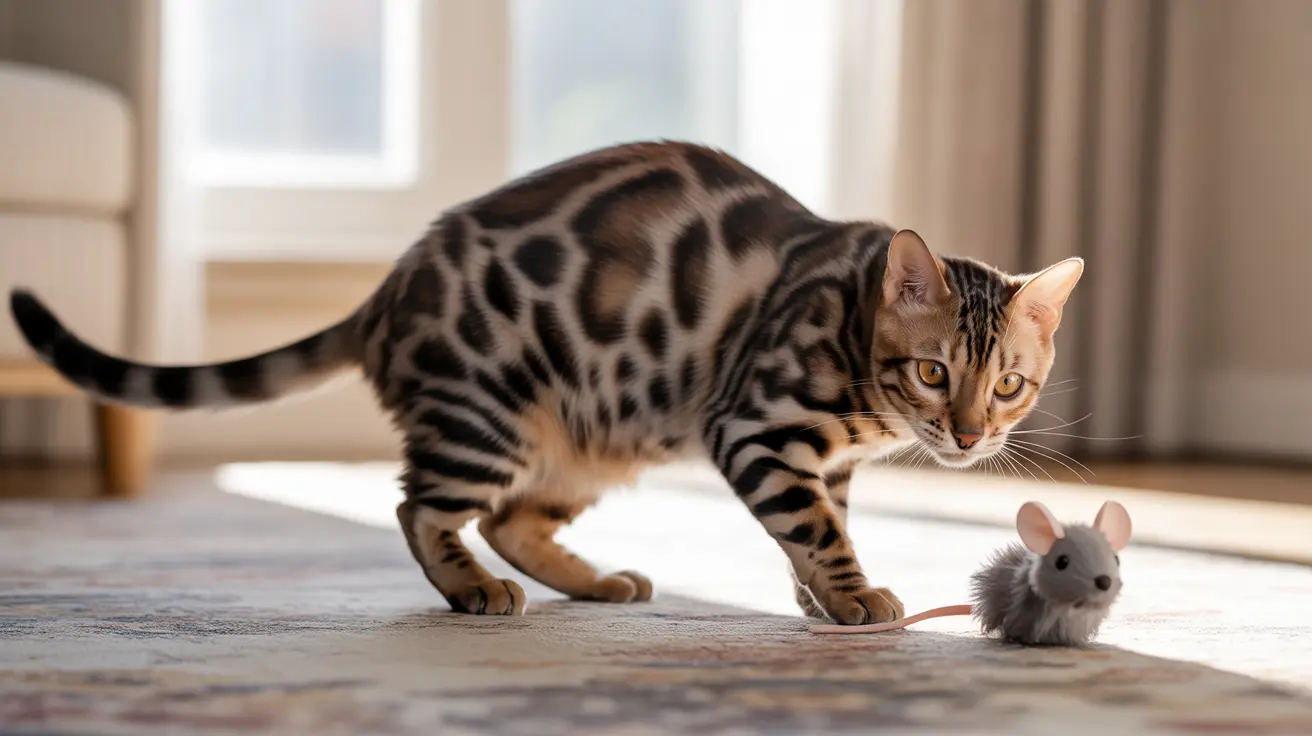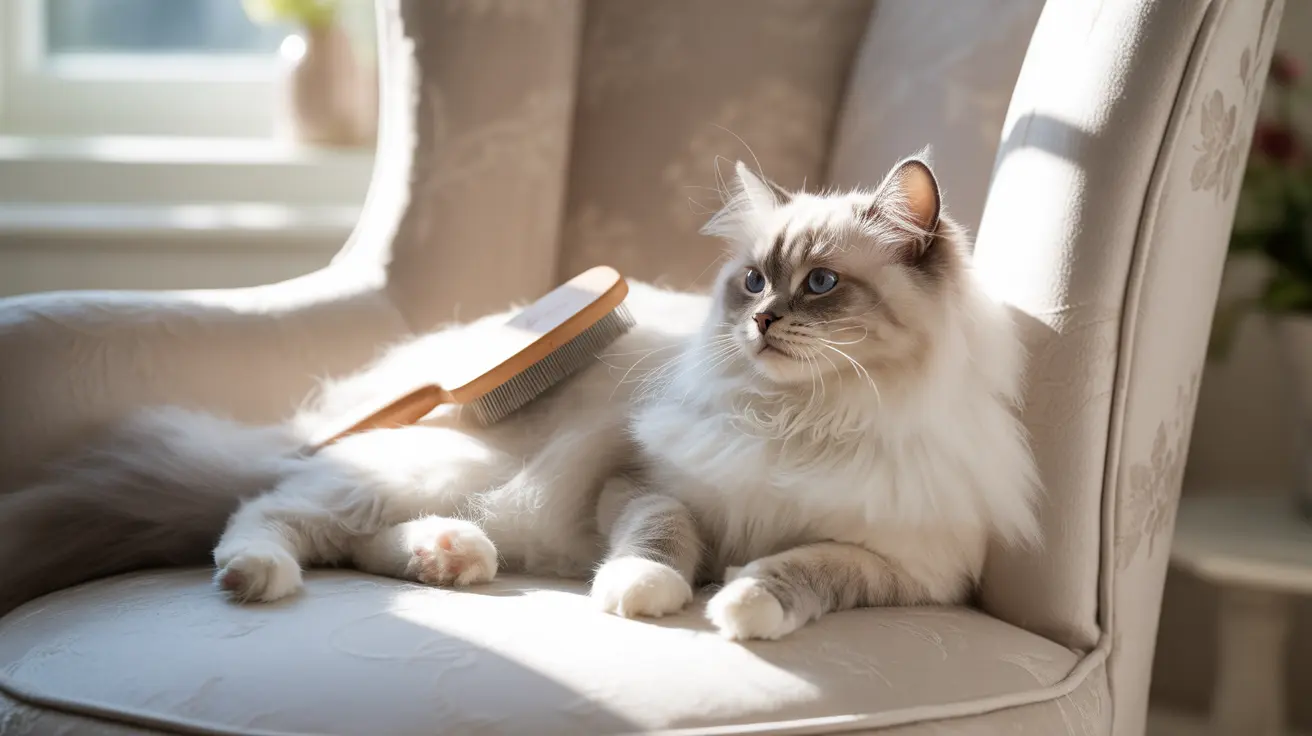Why Cats Stop Using Litter Box: Understanding Causes and Finding Solutions
When a previously well-trained cat suddenly stops using their litter box, it's one of the most frustrating problems pet owners face. This behavioral change isn't just random defiance – it's your cat's way of communicating that something is wrong. Understanding why cats stop using litter box is crucial for every cat owner, as this issue affects at least 10% of cats at some point in their lives.
The good news is that most litter box problems have identifiable causes and effective solutions. Whether your cat is dealing with medical issues, stress, or environmental dissatisfaction, addressing the underlying problem can restore proper bathroom habits. This comprehensive guide will help you identify the reasons behind your cat's behavior and provide proven strategies to get them back to using their litter box consistently.
Medical Issues: The First Priority in Litter Box Problems
Before exploring behavioral causes, it's essential to rule out medical conditions that could be causing your cat's litter box avoidance. Many health problems can make urination or defecation painful, leading cats to associate the litter box with discomfort.
Common Medical Causes
Urinary tract infections are among the most frequent medical reasons cats stop using their litter box. When cats experience pain during urination, they may avoid the box entirely, seeking alternative surfaces that they hope will provide relief. Other urinary issues include feline interstitial cystitis, kidney stones, and urinary blockages – all of which require immediate veterinary attention.
Gastrointestinal problems such as inflammatory bowel disease (IBD) and constipation can also cause litter box avoidance. Cats with arthritis may find it painful to climb into their box, especially if it has high sides. Additionally, metabolic diseases like diabetes, kidney disease, and thyroid disorders can affect bathroom habits by increasing urination frequency or causing other complications.
Warning Signs Requiring Immediate Veterinary Care
Certain symptoms indicate urgent medical attention is needed. Contact your veterinarian immediately if you notice your cat straining to urinate, producing only small amounts of urine or feces, showing blood in their urine, or appearing unable to urinate at all. Excessive licking of the genital area is another red flag that suggests medical intervention is necessary.
For declawed cats, paw sensitivity can make standing on certain litter types painful. These cats may benefit from softer alternatives like aspen or pine shavings, or paper-based litters such as shredded newspaper.
Stress and Environmental Changes: Hidden Triggers
Cats are creatures of habit, and even minor changes in their environment can trigger stress-related litter box avoidance. Understanding these psychological factors is crucial for addressing why cats stop using litter box consistently.
Identifying Stress Factors
Common stressors include moving to a new home, introducing new furniture, adding new family members (both human and pet), or changes in household routines. Even the presence of outdoor cats visible through windows can create territorial anxiety that manifests as inappropriate elimination.
Multi-cat households face additional challenges, as conflicts between cats can lead to litter box guarding, where one dominant cat prevents others from accessing the facilities. This creates a stressful situation that often results in inappropriate elimination by the subordinate cats.
Managing Environmental Stress
Reducing stress requires a multi-faceted approach. Maintain consistent routines as much as possible, and when changes are unavoidable, introduce them gradually. Synthetic pheromones like Feliway can help create a calming environment and reduce marking behavior. Provide adequate territory markers such as beds, shelves, and vertical spaces to help cats feel secure in their environment.
For separation anxiety, designating a specific blanket or comfort item can help cats cope with their owner's absence. Interactive play sessions can also reduce defensive and territorial behaviors by channeling energy into positive activities.
Litter Box Setup and Maintenance: Getting the Details Right
The physical aspects of the litter box setup play a crucial role in whether cats will use it consistently. Many litter box problems stem from inadequate setup or maintenance rather than behavioral issues.
Optimal Number and Placement
The golden rule for litter boxes is to provide one box per cat plus one extra. These boxes should be placed apart from each other and, ideally, on different floors of your home. This prevents territorial disputes and ensures cats always have access to a clean facility.
Location is equally important. Place litter boxes in quiet, private areas away from food and water bowls. Avoid tight spaces without escape routes, as cats need to feel they can exit quickly if threatened. Boxes should be easily accessible but not in high-traffic areas that might make cats feel vulnerable.
Size and Type Preferences
Most cats prefer large, open boxes without hoods or liners. The ideal box should be at least 1.5 times the length of your cat, giving them plenty of room to turn around comfortably. High-sided boxes can be challenging for senior cats or those with mobility issues, so consider low-entry alternatives for these cats.
Covered boxes may seem appealing to owners for odor control, but many cats find them claustrophobic and prefer open designs that don't trap odors or limit their visibility while using the facility.
Litter Type and Depth
Cats generally prefer unscented, clumping litter with a fine, sand-like consistency. When introducing new litter types, do so gradually by mixing the new litter with the old. Some cats develop aversions to their current litter over time, so offering multiple litter types side-by-side can help identify preferences.
Keep litter depth shallow, around 1-2 inches. Too much litter can be uncomfortable for cats and may discourage use. If you need to change litter types, transition slowly to avoid creating negative associations.
Cleanliness Standards: Meeting Feline Expectations
Cats have exceptionally high cleanliness standards, and a dirty litter box is one of the most common reasons why cats stop using litter box facilities.
Daily Maintenance Requirements
Scoop litter boxes at least once daily, and more frequently in multi-cat households. Remove waste immediately when possible, as cats may refuse to use a box that contains any waste. Weekly deep cleaning with mild, unscented soap is essential for maintaining hygiene standards that meet feline expectations.
Avoid using bleach or ammonia-based cleaners, as these can create odors that deter cats or may even encourage marking behavior. Instead, use white vinegar for natural odor removal, or choose enzyme-based cleaners specifically designed for pet waste.
Box Replacement and Long-term Care
Even with regular cleaning, litter boxes need periodic replacement. Plastic boxes can absorb odors over time, becoming unappealing to cats despite your cleaning efforts. Replace boxes annually or whenever you notice persistent odors that don't resolve with cleaning.
Distinguishing Between Elimination Problems and Marking Behavior
Understanding the difference between inappropriate elimination and urine marking is crucial for addressing why cats stop using litter box appropriately.
Characteristics of Urine Marking
Urine marking typically involves spraying on vertical surfaces with a specific body posture – the cat backs up to the surface, raises their tail, and releases a small amount of urine while standing. This behavior is often linked to territorial concerns or sexual behavior and is more common in unneutered cats.
True Elimination Problems
In contrast, elimination problems involve cats squatting and releasing normal amounts of urine or feces on horizontal surfaces. These cats are truly trying to eliminate waste but have chosen an inappropriate location due to medical issues, stress, or dissatisfaction with their litter box situation.
Addressing Accidents and Preventing Reinforcement
When cats eliminate outside the litter box, thorough cleanup is essential to prevent the behavior from becoming habitual.
Proper Cleaning Techniques
Clean soiled areas immediately with enzymatic cleaners specifically designed for pet waste. These cleaners break down the organic compounds that create odors, preventing cats from being attracted back to the same spot. Avoid household cleaners that may leave residual scents that encourage repeat incidents.
Deterring Future Incidents
Make previously soiled areas less appealing by covering them with aluminum foil, double-sided sticky tape, or upside-down carpet runners. You can also place food bowls, toys, or treats in these areas, as cats typically avoid eliminating near their food sources.
Special Considerations for Senior Cats
Older cats may face unique challenges that affect their litter box habits, requiring modified approaches to maintain proper elimination habits.
Age-Related Issues
Senior cats may develop arthritis that makes climbing into traditional litter boxes painful. Cognitive changes can also affect their ability to locate or remember to use their litter box. Some older cats may become incontinent, requiring additional management strategies.
Accommodations for Senior Cats
Provide low-sided litter boxes or cut entrance holes in regular boxes to improve accessibility. Place additional boxes in easily accessible locations throughout your home, and consider adding extra boxes near your senior cat's favorite resting spots. Non-slip mats around boxes can help cats with mobility issues maintain their footing.
When to Seek Professional Help
Some litter box problems require professional intervention beyond basic troubleshooting.
Veterinary Consultation
Schedule a veterinary examination if basic environmental modifications don't resolve the problem within a few weeks, or if you notice any signs of medical issues. Your veterinarian may recommend behavioral medications or nutraceuticals to reduce stress during the retraining process.
Behavior Specialists
For complex cases involving multiple cats or persistent behavioral issues, consider consulting certified cat behavior specialists or veterinary behaviorists. Resources like "Starting from Scratch" by Pam Johnson-Bennett and "Your Outta Control Cat" by Christine Church can also provide additional insights into feline behavior.
Frequently Asked Questions
How long does it typically take to retrain a cat to use the litter box?
The timeline for retraining varies depending on the underlying cause. Medical issues may resolve within days of treatment, while behavioral problems can take several weeks to months of consistent management. The key is identifying and addressing the root cause while maintaining patience throughout the process.
Should I punish my cat for eliminating outside the litter box?
Never punish your cat for litter box problems. Punishment increases stress and can worsen the behavior or create additional behavioral issues. Instead, focus on identifying and addressing the underlying cause while making the litter box more appealing and accessible.
Can I use regular household cleaners to clean accident sites?
Avoid household cleaners, especially those containing ammonia or bleach, as these can actually encourage repeat marking behavior. Use enzymatic cleaners specifically designed for pet waste, as these break down the organic compounds that create odors cats can detect even after the area appears clean to humans.
How many litter boxes do I really need for multiple cats?
Provide one litter box per cat plus one additional box. For example, if you have three cats, you should have four litter boxes placed in different locations throughout your home. This prevents competition and ensures all cats have access to clean facilities.
What should I do if my senior cat suddenly stops using the litter box?
Senior cats require immediate veterinary evaluation when litter box habits change, as age-related medical conditions are common culprits. After ruling out medical causes, consider providing low-sided boxes, additional locations, and easier access routes to accommodate mobility limitations.
Is it normal for cats to have litter preferences that change over time?
Yes, cats can develop new preferences or aversions to litter types they previously used without issue. Offering multiple litter types side-by-side can help identify new preferences, and gradual transitions are essential when changing litter brands or types.
When should I consider anti-anxiety medication for litter box problems?
Anti-anxiety medications should only be considered after consulting with your veterinarian and typically when environmental modifications haven't resolved stress-related elimination problems. These medications work best when combined with environmental management and behavioral modification techniques.
Conclusion
Understanding why cats stop using litter box facilities is essential for maintaining a harmonious household and ensuring your pet's well-being. Remember that this behavior change always has an underlying cause, whether medical, environmental, or stress-related. By systematically addressing potential issues – starting with a veterinary examination, optimizing the litter box environment, and managing stress factors – most cats can return to appropriate elimination habits.
Success requires patience, consistency, and a willingness to make environmental adjustments that meet your cat's specific needs. With the right approach and understanding of feline behavior, you can resolve litter box problems and strengthen the bond with your feline companion while maintaining a clean, comfortable home for everyone.






